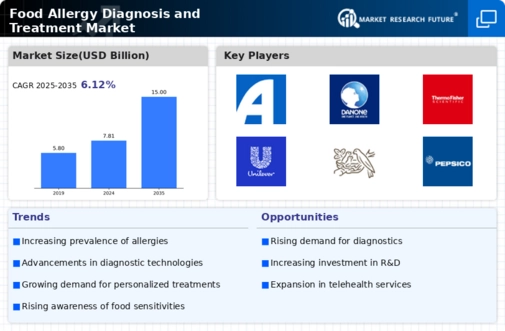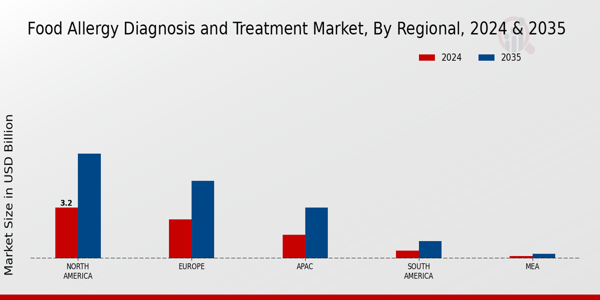Market Share
Food Allergy Diagnosis Treatment Market Share Analysis
The Food Allergy Diagnosis and Treatment Market, a critical segment within the healthcare industry, relies heavily on effective market share positioning strategies to navigate its competitive landscape. With the increasing prevalence of food allergies globally, companies within this market seek innovative ways to capture and maintain their share of the market.
One prevalent strategy employed by companies in this sector involves product differentiation. With numerous players offering similar diagnostic and treatment solutions, setting one's offerings apart becomes imperative. Companies invest in research and development to create unique diagnostic tools or treatment modalities that cater to specific segments of the market. For instance, some may focus on developing rapid diagnostic tests that provide quick and accurate results, while others may prioritize the development of novel treatment options that address the underlying mechanisms of food allergies.
Furthermore, strategic partnerships and collaborations play a pivotal role in market share positioning within the Food Allergy Diagnosis and Treatment Market. By forming alliances with healthcare providers, pharmaceutical companies, research institutions, and regulatory bodies, companies can enhance their market presence and expand their reach. Collaborations enable access to complementary resources, expertise, and distribution channels, facilitating the introduction of new products or services and increasing market penetration.
Another key aspect of market share positioning in the Food Allergy Diagnosis and Treatment Market involves targeted marketing and branding efforts. Companies utilize various marketing channels, including digital platforms, medical conferences, and educational seminars, to raise awareness about their products and services among healthcare professionals, patients, and caregivers. By effectively communicating the benefits and unique features of their offerings, companies can differentiate themselves from competitors and establish a strong brand presence in the market.
Moreover, pricing strategies play a crucial role in determining market share within the Food Allergy Diagnosis and Treatment Market. While quality and innovation are essential factors, pricing also influences purchasing decisions, particularly in healthcare settings where cost-effectiveness is a significant consideration. Companies must strike a balance between pricing their products competitively to attract customers and generating sufficient revenue to support ongoing research and development efforts.
In addition to product-centric strategies, companies within the Food Allergy Diagnosis and Treatment Market also focus on expanding their geographical presence. With the increasing globalization of healthcare, companies seek to enter new markets and establish partnerships with local distributors or healthcare providers. By understanding the unique needs and regulatory requirements of different regions, companies can tailor their offerings to suit local preferences and expand their customer base.
Furthermore, ongoing investment in research and development is crucial for maintaining market share in the highly competitive landscape of the Food Allergy Diagnosis and Treatment Market. As scientific knowledge advances and new technologies emerge, companies must continuously innovate to stay ahead of the curve. By investing in cutting-edge research, companies can develop breakthrough products and solutions that address unmet needs in the diagnosis and treatment of food allergies, thereby enhancing their competitive position in the market.















Leave a Comment